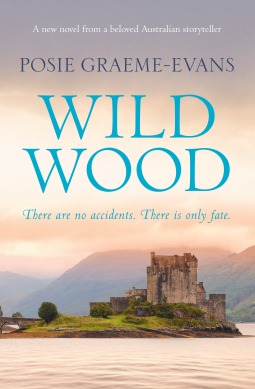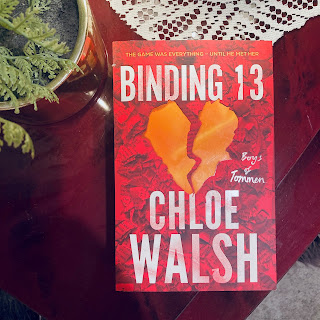Wild Wood Blog Tour: Q&A Posie Graeme-Evans
Hello and welcome! Today is my stop on the Wild Wood Blog Tour and I am chatting about research and myths (and a few other things besides,) with Posie Graeme-Evans, author of Wild Wood.
Hi Posie. Thank you so much for this
interview. I absolutely loved reading Wild
Wood. (Hi Kathryn. Thank you so much for such kind words!) A number of
elements within the novel were quite meaningful to me as my ancestors are from
The Borders. (Ah, the Borders. Adore that place – maybe you can tell : ) It was
wonderful to see the history of the area brought to life. (That’s a lovely
thing to say.)
How long did it take to research the novel?
A: Around two years all up. I started
thinking about what became “Wild Wood” while I was still writing “The Island
House”. I’m absolutely in love with Scotland - Borders, Islands, Highlands,
anywhere… and in the end I think I must have made 4 research trips in total
over 4 or so years; and research of places, buildings etc, crossed over a bit
between both the books.
Did you make any unexpected discoveries
along the way?
A: All the time!! The biggest revelation
for “Wild Wood” was the discovery of what it was actually like to live in a
fortified Tower House in the Border country of Dumfries and Galloway. We stayed
in an extraordinary building called The Castle of Park in the snowy march of
2013. It wasn’t huge, but it was planned for defense in every aspect. I think
it was the right-handed spiral stone staircase that drove the understanding
home: it was constructed so that a right-handed man coming down had enough room
to swing a sword at his assailant coming up. And the fact that the outer door had three layers of oak laid
crosswise (like a very eccentric club sandwich), was bound with iron straps and
studded with bolts the size of those on the Sydney harbour bridge! No one gets
through a door like that : )
Jesse Marley’s story is set in 1981, just
prior to Prince Charles and Diana’s wedding, which, as we know, happened nearly
34 years ago. Why did you choose this particular point in history?
A: It was a very vivid time in my own life
– and you remember vivid times as if they’re bathed in a different light. From
that time to this, the feeling stays with me that the whole world was in love
with that fairytale: handsome prince, virgin bride, ancient lineages uniting,
castles, cathedrals… (real life intruded in time; ah, well) Also, there were no
mobile phones or ease of communication between people at that time, and travel
was more difficult. Letters, not email! One phone per household on a table in
the hall! Wonderful for increasing the possibilities of drama between the
characters, I found
Was it difficult to balance the duel
narratives, i.e. Jesse’s story and that of Bayard Dieudonné?
A: Not really. I just let it rip ie I
didn’t plan, just wrote, and sorted it out later. In the last draft some
re-ordering took place but the broad forward march of the chapters in the final
book is pretty close to what they always were.
The myth of The Lady of the Forrest plays a
very important role in Wild Wood. Are
myths and legends something that is of particular interest to you? If so, how
have they influenced your writing?
A: Yes, and yes! Myths and legends tell us
so much about what we think we are and what’s important to us, as well. And
they’re so… magical; transformative; potent! I’m drawn to all those things
because I like to think that magic runs under the skin of life and colours what
we see (especially at the beginning and end of every day when long light
beautifies the world. And then, when the stars come out…)
I mean that semi-seriously, by the way. I
don’t think the material world is all there is. And, myths, fables, whatever
name we apply, do influence me in my
writing. For instance, the legend of the Fairy Flag – the foundation myth (if
it can be described as such) of the MacLeods of Dunvegan on the Isle of Skye -
underlies (several layers deep) what became the story of the lady in the forest
in “Wild Wood”. And, I read fairy stories so much as a child – often as an
escape. They went deep but this book is, I think, some of that story-substance
finding its way back into our surface world : )
Wild Wood
is, of course, your sixth novel (and a bloody brilliant one, I might add.) When
your first novel was published in 2002, did you ever imagine that you would one
day be celebrating the publication of your sixth novel? What advice do you have
for aspiring writers?
A: Your kind words about the book are much
appreciated! And did I think I’d turn into a full-time writer and just keep
going? No. I thought writing would always be inserted into the cracks of my real working life ie TV. But that’s
turned on its head now. Now I
actually call myself a writer, when people ask what I do. And that’s a
surprise. It didn’t happen in a blink, by the way, it grew slowly, that
transformation…
And, advice?
A: Each person is different but this
remains the same for each writer: you have to commit - to begin, in other
words, and then to keep moving forward. I don’t think there’s any escape from
that.
It doesn’t have to be every day by the way
(in fact, you’ll set yourself up to fail, I believe, if you tell yourself at
the beginning that that’s what you’re
going to do.) I started with one half day each weekend - it could have been two
hours, once a week. But I had the view that the target needed to be achievable
because I wanted to see the work grow under my hands.
And, don’t keep going back, don’t polish
every golden word! Re-read what you did last time, clean it up (don’t re-write
– a first draft is meant to be messy) and keep going. That way, you’ll actually
get to the end of the draft, you’ll actually write the whole story rather than
three perfect chapters!
Finally, is there anything that you would
like to say to your readers in Adelaide, Australia?
You lucky, lucky things! I was so fortunate
to live in Adelaide for some of my childhood, go to University there and, years
later, come back to make McLeods. I still find Adelaide one of the loveliest
cities I know – and I think it’s the perfect size. And then there are the
hills, the Barossa and the Clare. Hunter Valley? Pah! No comparison (sorry, but
I am partisan : )






Comments